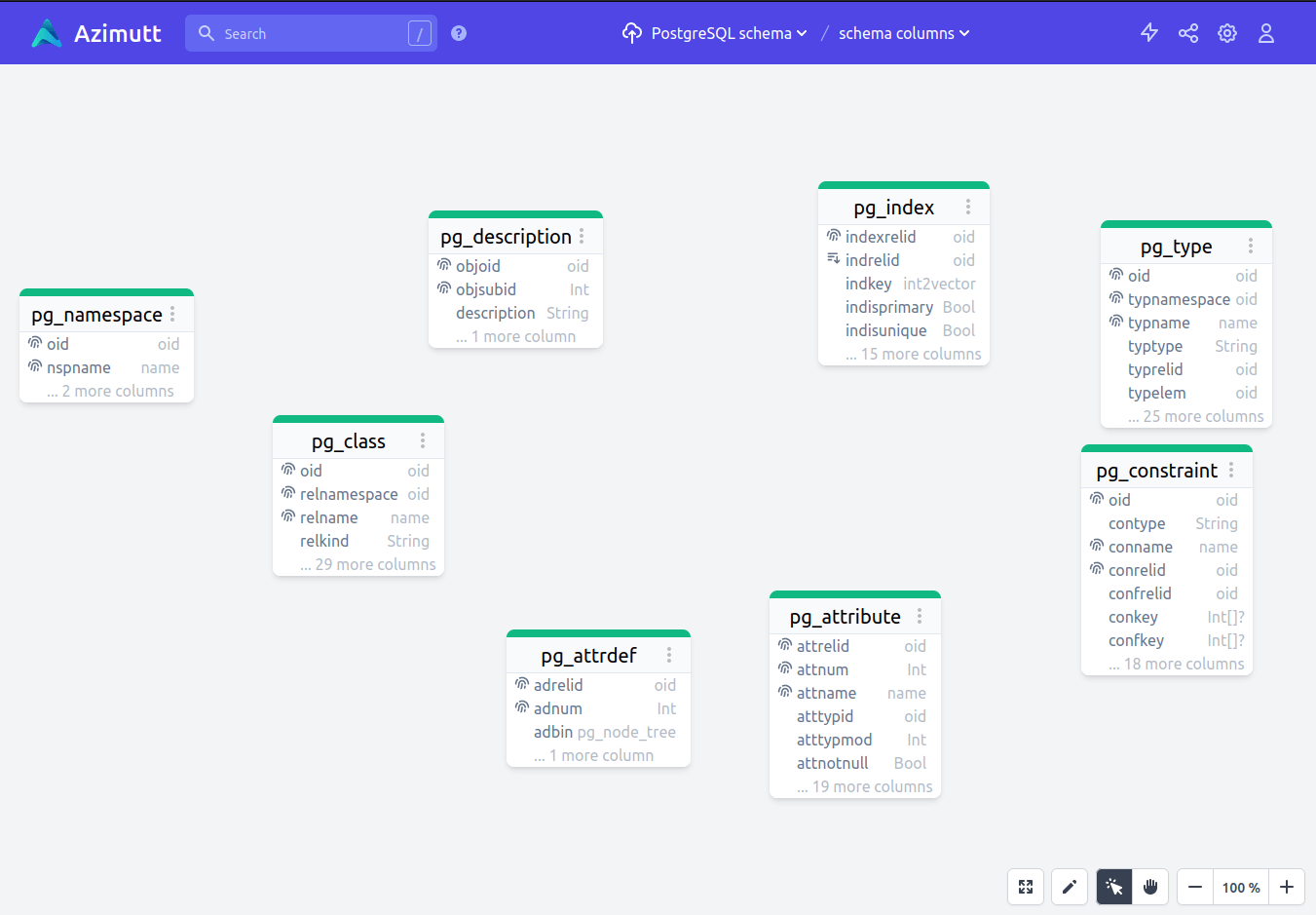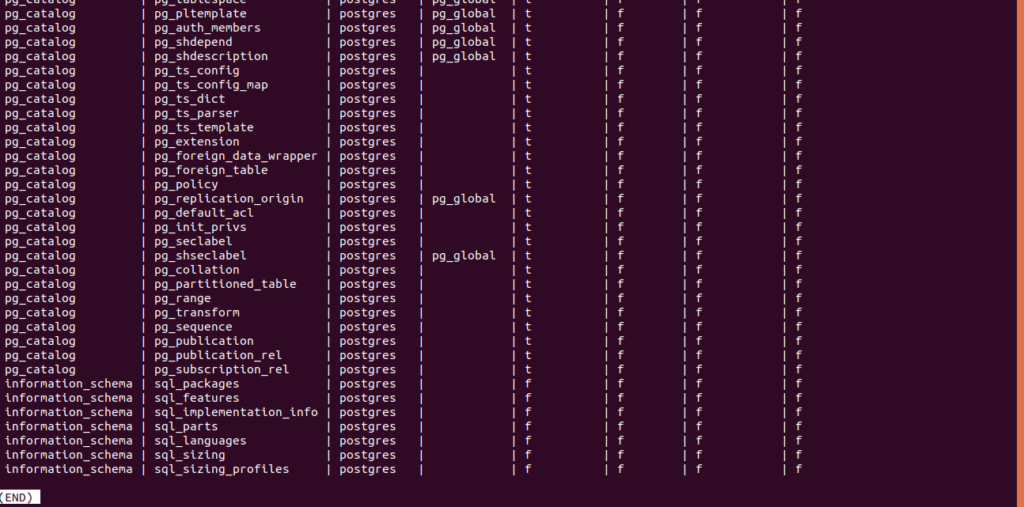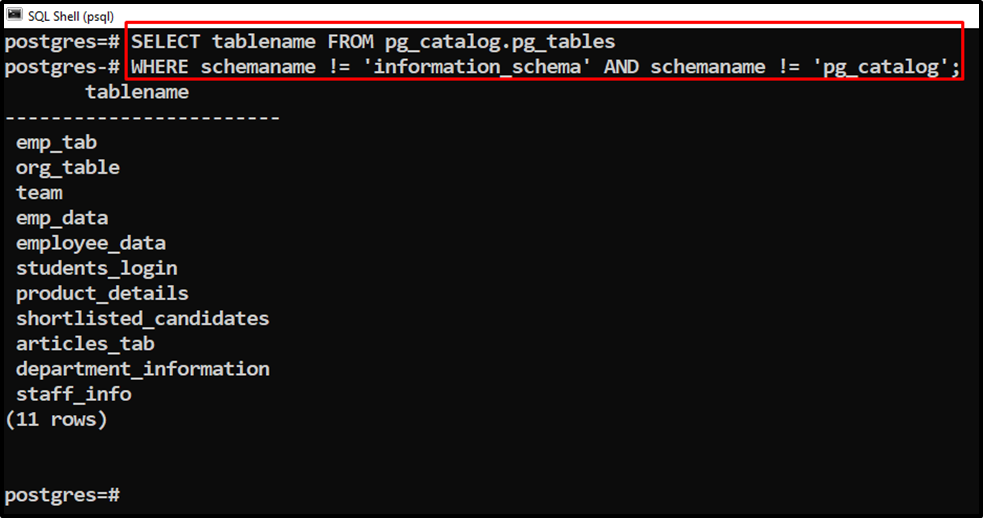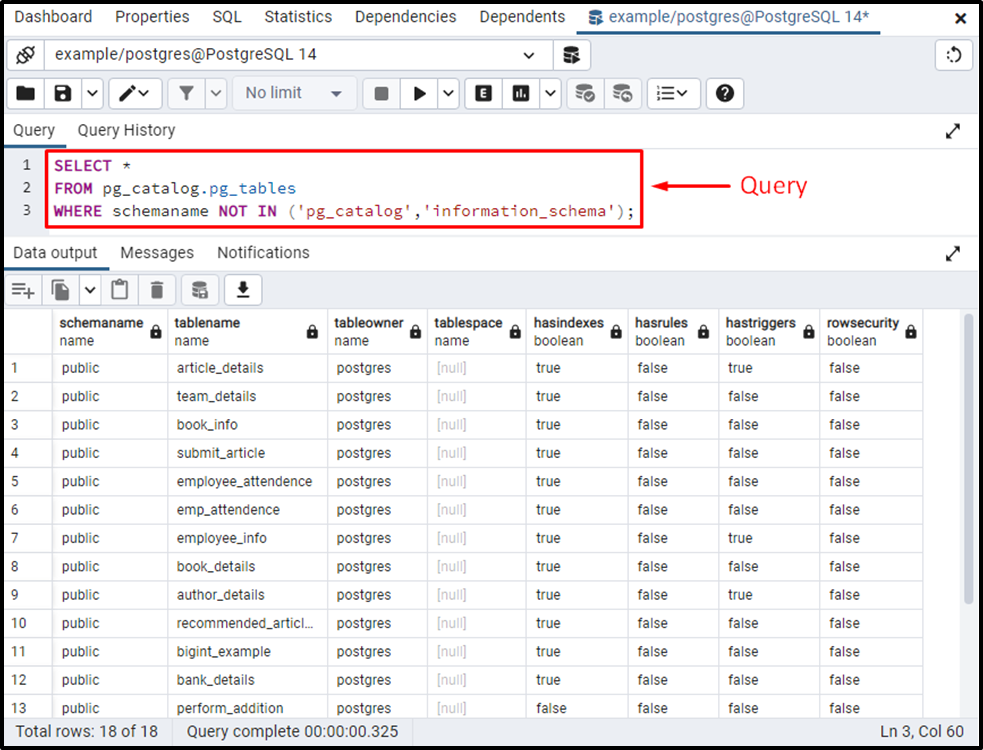Pg_Catalog
Pg_Catalog - The system catalogs are the place where a relational database management system stores schema metadata, such as information about tables and columns, and internal bookkeeping. See the list of catalogs, their names, purposes, and links to. In postgres, metadata about the tables, functions and other schema elements are exposed via the system catalogs, accessed through the. It is a default schema that is automatically included in every postgresql. What is the pg_catalog schema? More detailed documentation of each catalog follows below. The relationships between pg_am, pg_amop, pg_amproc, pg_operator and pg_opclass are particularly hard to understand and will be described in depth (in the section on interfacing types and operators to indexes) after we have discussed basic extensions. Access methods, see oracle metadata. Other aspects of the sql standard. If you're writing an application that depends on information stored in the system tables, use an existing catalog view or create a catalog view to isolate the application from. What is the pg_catalog schema? The true source of information in postgres are the catalog tables in pg_catalog. What are the catalog and the information schema ? More detailed documentation of each catalog follows below. Other aspects of the sql standard. Most system catalogs are copied from the template database during database creation and. These catalogs form a centralized repository that stores metadata about the database itself, such as tables, indexes, columns, constraints, functions, users, privileges, extensions, query. Learn about the system catalogs that store metadata and configuration information for postgresql databases. The tables in the pg_catalog schema roughly correspond to the system catalogs in postgresql. All system catalogs have names that begin with pg_. The system catalogs are the place where a relational database management system stores schema metadata, such as information about tables and columns, and internal bookkeeping. More detailed documentation of each catalog follows below. As such the table definitions are registered in. These catalogs form a centralized repository that stores metadata about the database itself, such as tables, indexes, columns, constraints,. What are the catalog and the information schema ? Table 51.1 lists the system catalogs. Ranges, indexes, users, and user groups are stored. These catalogs form a centralized repository that stores metadata about the database itself, such as tables, indexes, columns, constraints, functions, users, privileges, extensions, query. For postgresql compatibility, cockroachdb includes a system catalog called pg_catalog. Access methods, see oracle metadata. Views in the information_schema are based on those. What is the pg_catalog schema? Ranges, indexes, users, and user groups are stored. In this guide, we‘ve explored some of the most useful objects within the pg_catalog schema. See the list of catalogs, their names, purposes, and links to. As such the table definitions are registered in. Views in the information_schema are based on those. Table 51.1 lists the system catalogs. Other aspects of the sql standard. As such the table definitions are registered in. The tables in the pg_catalog schema roughly correspond to the system catalogs in postgresql. What are the catalog and the information schema ? Table 51.1 lists the system catalogs. Learn about the system catalogs that store metadata and configuration information for postgresql databases. Views in the information_schema are based on those. Table 51.1 lists the system catalogs. If you're writing an application that depends on information stored in the system tables, use an existing catalog view or create a catalog view to isolate the application from. What are the catalog and the information schema ? It is a default schema that is automatically. Learn about the system catalogs that store metadata and configuration information for postgresql databases. From tracking database objects to monitoring current activity to inspecting. What are the catalog and the information schema ? The system catalogs are the place where a relational database management system stores schema metadata, such as information about tables and columns, and internal bookkeeping. Table 51.1. What are the catalog and the information schema ? Ranges, indexes, users, and user groups are stored. The tables in the pg_catalog schema roughly correspond to the system catalogs in postgresql. The relationships between pg_am, pg_amop, pg_amproc, pg_operator and pg_opclass are particularly hard to understand and will be described in depth (in the section on interfacing types and operators to. The true source of information in postgres are the catalog tables in pg_catalog. In postgres, metadata about the tables, functions and other schema elements are exposed via the system catalogs, accessed through the. Other aspects of the sql standard. The system catalogs are the place where a relational database management system stores schema metadata, such as information about tables and. As such the table definitions are registered in. These catalogs form a centralized repository that stores metadata about the database itself, such as tables, indexes, columns, constraints, functions, users, privileges, extensions, query. Table 51.1 lists the system catalogs. In postgres, metadata about the tables, functions and other schema elements are exposed via the system catalogs, accessed through the. From tracking. As such the table definitions are registered in. More detailed documentation of each catalog follows below. See the list of catalogs, their names, purposes, and links to. The following tables contain information that may be useful to the end user. The relationships between pg_am, pg_amop, pg_amproc, pg_operator and pg_opclass are particularly hard to understand and will be described in depth (in the section on interfacing types and operators to indexes) after we have discussed basic extensions. The tables in the pg_catalog schema roughly correspond to the system catalogs in postgresql. What is the pg_catalog schema? What are the catalog and the information schema ? It is a default schema that is automatically included in every postgresql. Views in the information_schema are based on those. Most system catalogs are copied from the template database during database creation and. For postgresql compatibility, cockroachdb includes a system catalog called pg_catalog. These catalogs form a centralized repository that stores metadata about the database itself, such as tables, indexes, columns, constraints, functions, users, privileges, extensions, query. The system catalogs are the place where a relational database management system stores schema metadata, such as information about tables and columns, and internal bookkeeping. Other aspects of the sql standard. If you're writing an application that depends on information stored in the system tables, use an existing catalog view or create a catalog view to isolate the application from.Postgresql system Catalog 中的系统表能告诉你什么 (一)?腾讯云开发者社区腾讯云
Tutorial 36PostgreSQL system catalogs schema (System information
Explore PostgreSQL internals with SQL to extract a database schema
About the PostgreSQL System Catalogs
Listing out Tables in PostgreSQL Using psql, SELECT Query EDUCBA
Documenting relationships in the pg_catalog schema
Meu Blog de PostgreSQL!!! Faça Você Mesmo Diagramas de Classe com as
How to Get Metadata from PostgreSQL System Catalogs CoderPad
PostgreSQL List Users, Databases, Schemas, Tables CommandPrompt Inc.
How to Show Tables in PostgreSQL? CommandPrompt Inc.
Learn About The System Catalogs That Store Metadata And Configuration Information For Postgresql Databases.
(There Are Many Other System Catalogs, But There Should Rarely.
The True Source Of Information In Postgres Are The Catalog Tables In Pg_Catalog.
All System Catalogs Have Names That Begin With Pg_.
Related Post:









